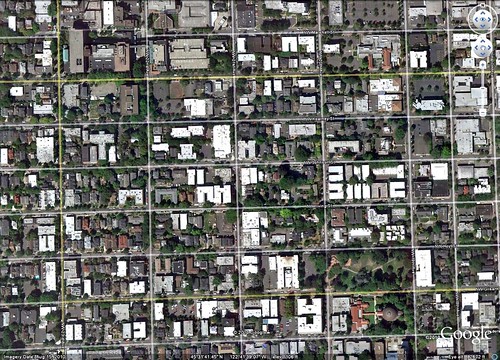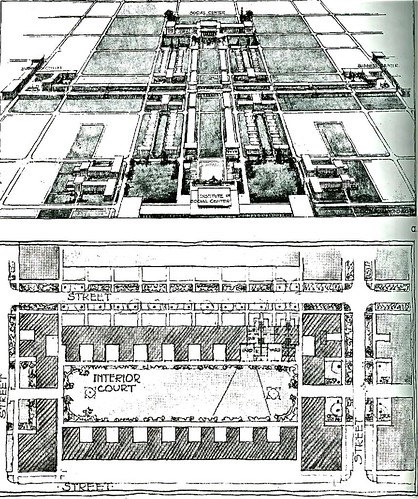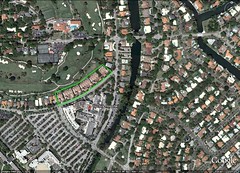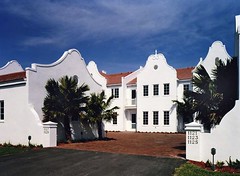Lessons in neighborhood planning and architecture, from history and today

Posted December 1, 2010 at 1:31PM
In the last week or so, I have come across two items chock-full of education about neighborhood design and practice in the US.
First, writing in his provocative blog myurbanist, Chuck Wolfe gives us a history lesson tracing the intellectual roots of neighborhood street design. I have spent so much time with the likes of Victor Dover and Eliot Allen that I now worship regularly at the Church of Street Connectivity and Shared Public Space ®, because I have become convinced that the result is much more walkability, reduced automobile dependence, conserved land, and more opportunity for social interaction. But I’ve never studied these things formally and know little about their history.
Drawing from a book chapter that he authored, Chuck points out that the importance of connectivity to community “can be rediscovered in the Chicago of 100 years ago, where a still-relevant competition once summarized by Lewis Mumford centered on integrating neighborhood housing with 'markets, schools, churches, and other institutions that serve the local area rather than the city as a whole.'"
One of the debates illuminated by that exhibition, organized by the City Club of Chicago, was over how integrated the neighborhood should be with the rest of the city. Then, as now, there were differing opinions as to whether the neighborhood focus should be inward upon itself or outward, to relate to its context. A concept offered by Prairie School architect William Drummond (above) can be read as a bit of a hybrid, placing the community on a larger connected grid of streets, but with interior green courts within each block. Although the aerial vision looks a little silly and forced (and perhaps anti-urban) today, the drawing of the block has something in common with the one I praised not long ago by Daniel Nairn, offered as a way of integrating appropriately scaled vegetable gardens into the city and based on a block in Richmond.
Chuck writes:
“In response to such efforts, the competition provided a ‘Sociological Review of the Plans’ by Dr. Carol Aronovici, then director of the Bureau of Social Research of Philadelphia, and a lecturer on housing and town planning at the University of Pennsylvania. Aronovici cautioned that the new, local street plans within specific areas should not proceed without determination of ‘the relationship that this area is intended to bear to the whole.’
“Aronovici, like many of today’s urbanists, saw virtue in the grid. He viewed the abandonment of the gridiron street system as a possible symptom of an ‘artificial and radical’ attempt to set the planned community off from its surroundings. He urged the location of public and semi-public buildings on the community’s periphery rather than grouped about local community centers, so as to preserve contacts with adjacent neighborhoods. Finally, he perceptively identified problems inherent in public regulation and ownership of inner block open spaces and saw the necessity of assuming community maintenance of public areas.”
As always, Chuck’s writing leaves me wishing I didn’t have to, you know, think for myself in wrestling with these concepts. It would be so much easier if he just spoon-fed us with the answers. But, instead, he makes me want to learn more about all that creative and intellectual ferment. If you would like your own appetite whetted, visit his post.
Next, we move a bit down in scale to a small infill project that adds density to an existing suburban-style neighborhood, on a challenging site. The project, called Campo Sano Village, places 19 homes on slightly over two acres in Coral Gables, Florida. The architecture is based on historical antecedents in the community.
The video below, which features architect (and dean at the University of Miami) Liz Plater-Zyberk, takes the viewer inside her thinking for how best to make good use of the site and integrate the small townhome development into its context. The best part is how she concisely explains the design challenges posed by the situation and how she resolved them (and, in some cases, was limited by regulation as to what she could do). As Liz explains, this is the middle scale, smaller than a complete neighborhood but larger than a single building site. It is also smart growth in the real world, as opposed to the world that we wish we had to work with. I learned a lot watching, and I hope you will, too:
Move your cursor over the images for credit information.



